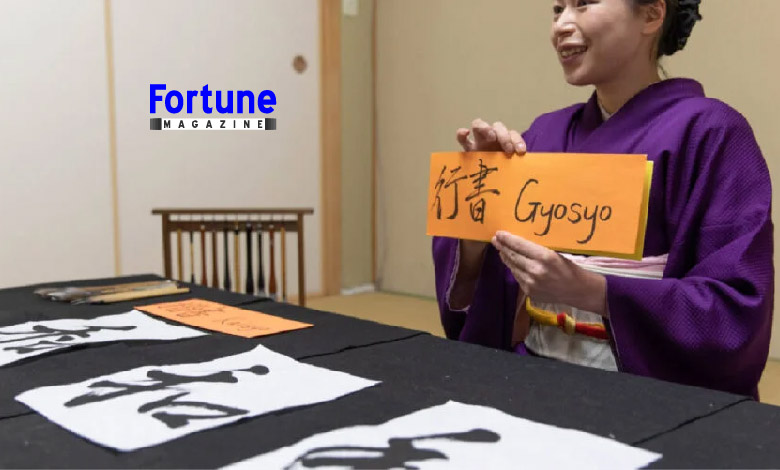Understanding “Jyokyo” in Japanese Culture: Meaning and Usage

What is “Jyokyo” and Why Does It Matter?
If you’ve ever wondered about the subtle intricacies of Japanese language and culture, the term “jyokyo” might offer you an insightful glimpse into the way Japanese people interact with their surroundings. Jyokyo (状況) translates to “situation” or “condition” in English, but its deeper cultural significance extends far beyond a simple description of events. In Japan, jyokyo is not just about the external circumstances—it encompasses the awareness of these circumstances, how they are perceived, and the appropriate response to them.
In this comprehensive guide, we’ll explore the meaning, cultural importance, and various uses of jyokyo in both formal and informal settings. Whether you’re planning to visit Japan, communicate with Japanese colleagues, or simply want to understand the deeper layers of Japanese conversation, understanding jyokyo will help you connect more effectively with the culture and its people.
The Meaning of “Jyokyo” in Japanese
At its core, jyokyo means “situation” or “condition.” It describes the context or state of affairs in any given moment. However, jyokyo is not a simple term like “situation” in English—it carries with it layers of meaning that reflect the deeply contextual nature of Japanese society.
In Japan, jyokyo is often used to describe not just an external condition, but how that condition is understood by individuals and how they respond to it. In essence, jyokyo asks people to be conscious of their environment and the dynamics at play, whether it’s in a business meeting or a casual conversation.
Example:
- “Ashita no jyokyo shidai da ne” (It depends on tomorrow’s situation).
This phrase illustrates the flexibility of jyokyo and its role in decision-making, especially when things are subject to change.
How “Jyokyo” Reflects Japanese Cultural Values
The term jyokyo is deeply intertwined with the values that define Japanese society. These values include harmony, balance, and awareness, all of which play a pivotal role in how the Japanese communicate and interact with others.
Harmony and Awareness in Action
Jyokyo can be seen as a mirror of the Japanese concept of wa (和), meaning harmony. This cultural value emphasizes the importance of maintaining smooth, non-conflictual relationships. People are expected to read the room and adjust their behavior based on the prevailing jyokyo—that is, the situation or environment they find themselves in. This is especially true in professional and social settings, where failing to do so could disrupt group harmony.
For instance, if someone is in a meeting where tensions are high, it’s considered polite and strategic to gauge the jyokyo and adjust your tone, speech, or even body language to keep things harmonious. Similarly, jyokyo encourages people to hold back their personal opinions if they might cause friction.
Example of Contextual Awareness
Imagine you are in a Japanese restaurant. The quiet ambiance encourages diners to speak softly and maintain respectful body language. The jyokyo of the space influences your behavior. You’re aware of your surroundings and act accordingly, not out of a sense of obligation but as part of your cultural understanding.
Formal and Informal Use of “Jyokyo”
While the meaning of jyokyo remains largely consistent, the tone and formality with which it’s used can vary depending on the context.
Professional and Formal Contexts
In professional settings, jyokyo is used to convey a sense of respect and thoughtfulness. Whether it’s discussing market conditions in a business report or explaining operational challenges during a meeting, jyokyo helps maintain a formal tone while acknowledging the broader context. This use is often framed in indirect or polite language to avoid sounding too direct or confrontational.
- Keiei no jyokyo (経営の状況): Business conditions
- Kinkyuu jyokyo (緊急状況): Emergency situation
These phrases allow professionals to acknowledge challenges or opportunities without laying blame or drawing too much attention to specific individuals.
Casual Conversations
In casual conversations, jyokyo takes on a lighter, more personal tone. Friends or family may use the word in a less structured way, simply describing a situation or making small talk. The flexibility of jyokyo is what makes it so versatile across different forms of communication.
- Jyokyo wa? (What’s the situation? / What’s up?)
Here, the speaker is asking for an update in a non-urgent, informal manner.
Common “Jyokyo” Phrases in Professional Settings
In professional Japanese communication, jyokyo frequently appears in reports, discussions, and analyses. Below are some common phrases you may encounter in a corporate or formal setting:
| Phrase | Translation | Usage |
|---|---|---|
| 経営の状況 (Keiei no Jyokyo) | Business conditions | Used in company reports, board reviews, and strategy meetings |
| 緊急状況 (Kinkyuu Jyokyo) | Emergency situation | Referenced in crisis response, disaster planning, and public health updates |
| 市場の状況 (Shijou no Jyokyo) | Market condition | Found in financial news, investor notes, and economic outlooks |
| 雇用の状況 (Koyou no Jyokyo) | Employment conditions | Common in labor statistics, HR reports, and government updates |
| 国際情勢 (Kokusai Jyosei) | International situation | Used in diplomatic statements, political analysis, and global news |
“Jyokyo” in Daily Conversation
In day-to-day interactions, jyokyo can take on a casual, easy-going tone. This flexible nature makes it a key part of everyday Japanese communication. Here’s how you might use jyokyo in various informal contexts:
Casual Example 1:
- Person 1: “今日はどうする?” (What are we doing today?)
- Person 2: “今の jyokyo によるけど、晴れたら外に出たいね。” (It depends on the situation, but if it’s sunny, I want to go outside.)
Casual Example 2:
- “Ima no jyokyo wa dou?” (How’s everything now?)
In these examples, jyokyo serves as a way to reflect upon the present moment without assuming a rigid context, making it ideal for friendly exchanges.
Mindfulness and “Jyokyo”: A Philosophical Perspective
The concept of jyokyo also aligns with broader philosophies of mindfulness, particularly those found in Zen traditions. In Zen, awareness of the present moment is key, and jyokyo encourages this by asking individuals to fully engage with their situation without resistance.
This awareness of the current moment allows individuals to adjust their behavior, thoughts, and actions accordingly, fostering a sense of inner balance and social harmony.
Mindfulness in Action:
When you practice jyokyo, you’re not just reacting to a situation—you’re noticing it, evaluating it in real-time, and responding in a way that respects both yourself and others. This creates a smooth flow of interaction that values the context over the individual.
Misconceptions About “Jyokyo”
“Jyokyo” vs. “Jijō”
Many people confuse jyokyo (状況) with jijō (事情), both of which are often translated as “situation” or “circumstances.” However, jijō typically refers to personal reasons or conditions, while jyokyo refers to the broader, often external setting or environment.
Not Always Negative
Another misconception is that jyokyo always implies a problem or crisis. In fact, jyokyo is neutral—it simply refers to the current state of affairs, whether positive, negative, or neutral.
How to Apply “Jyokyo” in Your Daily Life
Understanding jyokyo can enhance your interactions, whether you’re working in a Japanese company or simply trying to be more mindful in your day-to-day interactions.
In the Workplace:
In a business setting, being aware of jyokyo means adjusting your communication based on the context. This shows respect for the situation, your colleagues, and the broader environment.
While Traveling:
Being mindful of jyokyo during travel, such as adjusting your behavior in public spaces, can help you blend in and show cultural sensitivity.
In Relationships:
In personal relationships, jyokyo involves recognizing your partner’s mood and adjusting your behavior accordingly. If your partner seems stressed, offering space or comfort might be the right response.
“Jyokyo” in the Digital Era
With the rise of digital communication, the concept of jyokyo has made its way into online interactions as well. On Japanese social media, users often adjust their tone based on their relationship with the recipient—whether they’re speaking to friends, coworkers, or strangers.
This mindful approach is a natural extension of jyokyo into digital communication, emphasizing the importance of context even in online spaces.
The Future of “Jyokyo” and Its Global Relevance
As mindfulness practices gain popularity worldwide, jyokyo may find a place in global discussions on communication and social harmony. Understanding jyokyo is not only important for learning Japanese but also for developing cross-cultural empathy in an increasingly interconnected world.
Conclusion
Jyokyo is more than just a Japanese word for “situation.” It’s a concept that reflects the importance of context, awareness, and harmony in communication. Whether in professional settings or everyday interactions, understanding jyokyo can help you navigate the subtleties of Japanese culture, improve your relationships, and even deepen your mindfulness practice.
As we move toward a more globalized world, the principles embodied in jyokyo—contextual awareness and harmonious living—can serve as valuable tools for connecting with others, both in Japan and beyond.
FAQs
1. What does “jyokyo” mean in Japanese?
“Jyokyo” means “situation” or “condition” in Japanese, but it also refers to the awareness of the context and how one responds to it.
2. How is “jyokyo” used in Japanese business?
In business settings, “jyokyo” is used to describe conditions such as market situations, business performance, or emergency situations.
3. Is “jyokyo” used in casual conversations?
Yes, in informal settings, “jyokyo” is used in a relaxed way to describe changing circumstances or to ask about someone’s current situation.
Check This Out: Scopi Tech.com: Driving Innovation in the Digital Era
More Updates Stay with: Fortune Magazine




